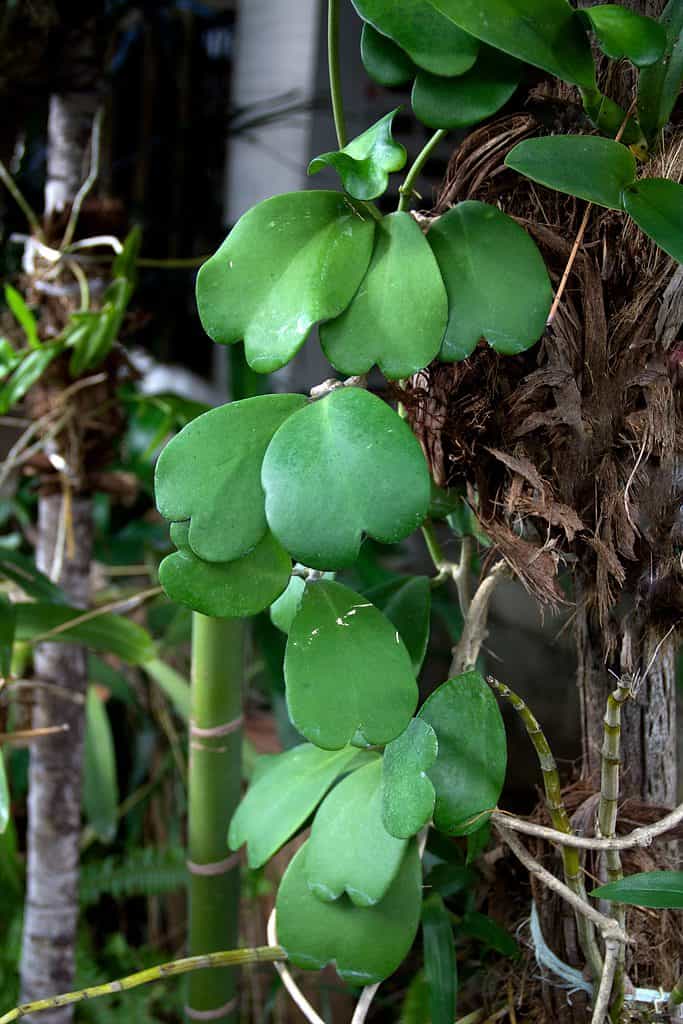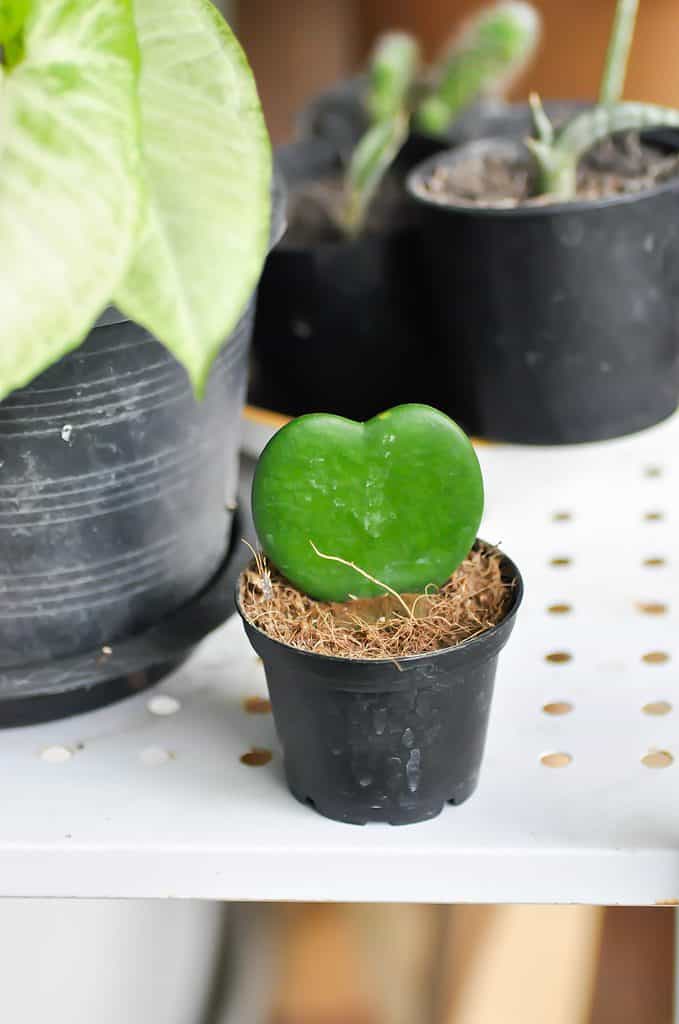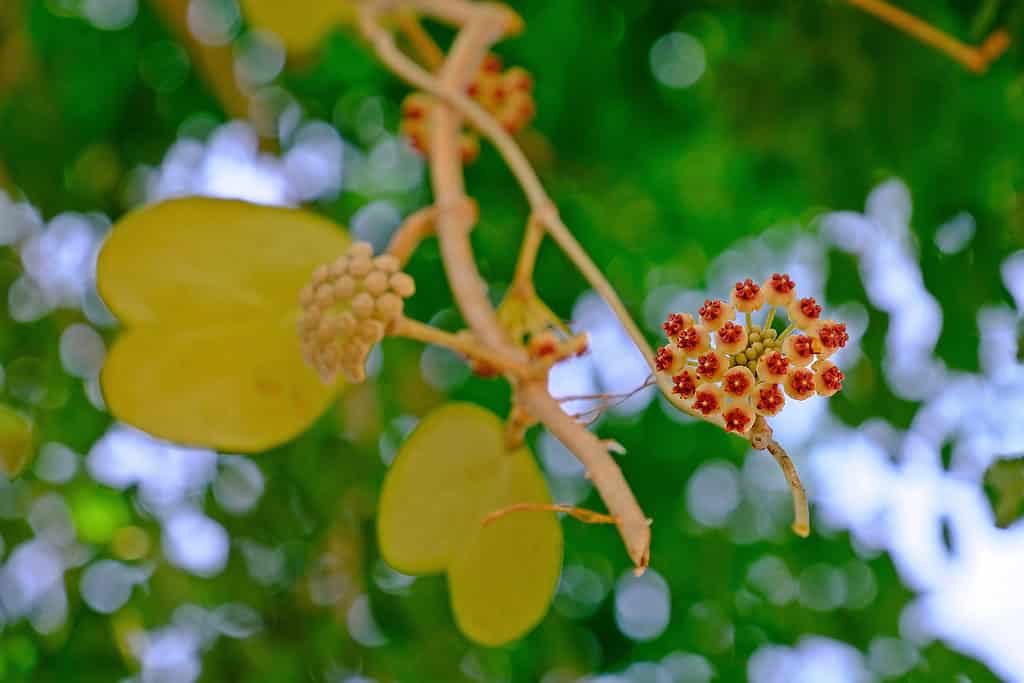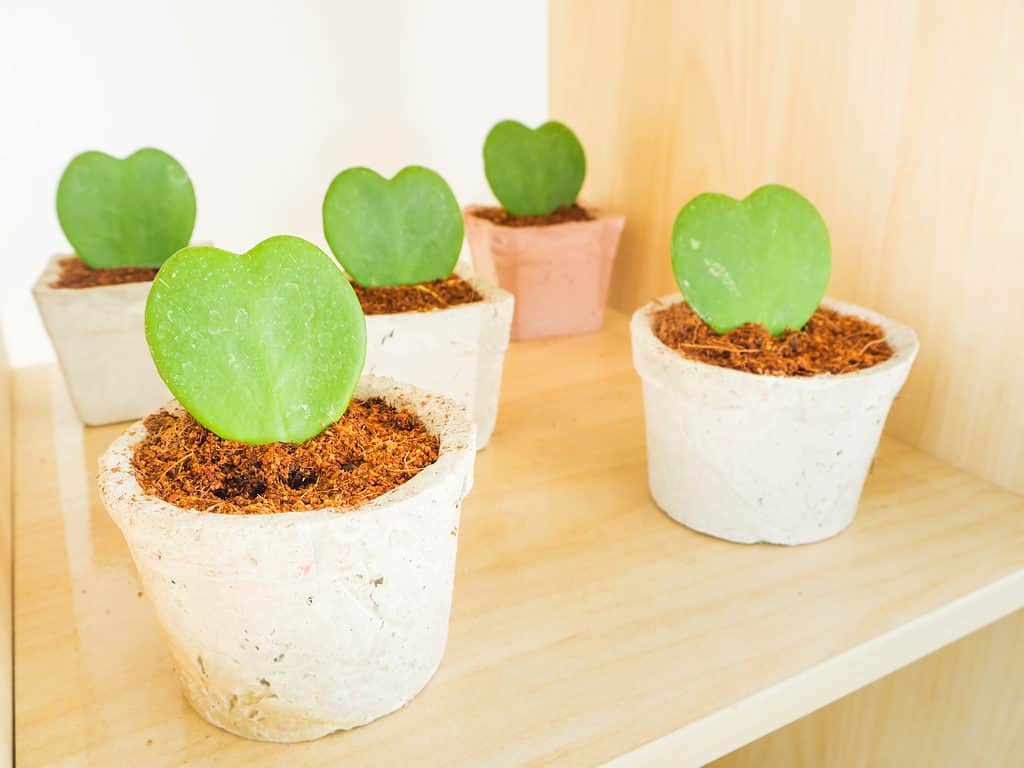We are getting close to Valentine’s Day. So why not celebrate by giving your sweetie (or yourself) a sweet gift? The perfect solution is a Valentine hoya. Or you may know it as a Sweetheart hoya (Hoya kerrii). It is a member of the Apocynaceae family and one of the hundreds of hoyas available. You can select any variety of hybrids, species, and cultivars, whichever suits your style and taste. Hoyas are very popular houseplants. It is partly because they are easy to tend to. Additionally, they have stunning flowers that bloom every year.
But we won’t talk about just any of the hoyas in this article. Instead, we are going to take a deep dive into Sweetheart hoyas. We will look at its unique attributes and specific care instructions.
| Scientific Name | Hoya kerrii |
| Common Name(s) | Valentine Hoya, Lucky Heart Plant, Valentine Hoya, Sweetheart Hoya, Sweetheart Wax Hearts, Sweetheart Plant |
| Plant Family | Apocynaceae |
| Native Region(s) | Thailand, India, China, Malaysia |
| Life Cycle | Perennial |
| USDA Hardiness Zone | 10-11 |
| Cultivar(s) | Variegata, Reverse Variegata |
This spectacular plant is perfect for a hanging basket. It develops long, trailing vines that create a beautiful waterfall out of the container. If you prefer, you could also plant your Hoya kerrii in a container on the ground and provide it with a trellis to climb.
Continue reading to learn more information about the stunning Hoya kerrii plant. You will learn how this plant differs from its cousins and how to keep your lovely new edition healthy.

Sweetheart hoya plants have long, trailing vines.
©noypb/Shutterstock.com
Hoya kerrii Leaves
Sweetheart hoya plants have stunning green, heart-shaped leaves. But they do vary a little. You may find a sweetheart hoya with smooth leaves, large leaves with prominent veins, or leaves with a downy surface.

Sweetheart hoyas get their name from the distinctive heart-shaped leaf.
©Job Narinnate/Shutterstock.com
Hoya kerrii Flowers
The flowers of a sweetheart hoya are delicate, star-shaped, and tiny, measuring only about ¼” each. Ten flowers are usually in each umbel. They range from white to pink to burgundy in color. They have a slightly waxy appearance and almost feel like velvet.
While all hoya flowers have abundant nectar, Hoya kerrii usually has an excess amount. So definitely plant in a space that won’t get damaged by the sticky juice.
If you propagate your sweetheart hoya from a cutting or purchase a young plant, you will have to wait a while for the flowers. All hoya plants take approximately two or three years before the first blossoms appear. So, as long as you take good care of your plant, you will soon delight in the stunning blossoms!

Sweetheart hoyas have incredibly delicate flowers that grow together in clusters.
©Supratchai Pimpaeng/Shutterstock.com
Fun Facts About Hoya kerrii
Anyone living in Zones 10 or 11 may want to consider keeping their Hoya kerrii outdoors. People aren’t the only ones who enjoy lovely flowers. The sweet nectar attracts ample butterflies and hummingbirds. So you let your Hoya kerrii cover a trellis. Then kick back and watch lots of winged friends arrive.
Caring for a Hoya kerrii
Experienced and beginner gardeners will love hoya plants. These low-maintenance plants are easy to care for and have few disease or pest issues. Additionally, when they are adequately cared for, they will live for decades.
So, let’s look at how to care for your Hoya kerrii plant.
Temperature Requirements
Sweetheart hoyas are tropical, so they require a very particular environment. The first thing they need is a decent humidity level. Make sure to keep your hoya in an area with a stable humidity level somewhere between 60 and 80.
Additionally, Hoya kerriis require warmth. Typically, the standard indoor temperature is sufficient. Anywhere from 60 to 85 degrees Fahrenheit is ideal. However, if, for some reason, the temperature goes below 60, it is not the end of the world. Hoyas can tolerate down to 50 degrees for short periods. But don’t let them stay chilly for too long, or you risk stunting their growth.
Growing Requirements
Since Hoya kerriis are vining plants, they thrive in hanging baskets or containers near a trellis or climbing pole. Either option will work well. The primary consideration is the size of the container. Hoyas do not have deep root systems, so shallow pots are ideal. These lovely tropical plants are prone to root rot if their soil becomes waterlogged. Try to find a pot that will keep them snug (but not rootbound) and allow plenty of drainage.
Any airy, nutrient-rich potting medium will work well for your Hoya kerrii. Ideally, the mix you select will also be loose and well-draining. But it is not necessary. You can even opt for soil marketed to succulents and cacti. Items like pumice, perlite, or ceramic balls can get added for aeration.
Feeding your sweetheart hoya is easy. During the winter, it does not need food at all. The plants go dormant in the cold months awon’tn’t absorb the nutrients. As spring hits, feed your hoya a water-soluble, nitrogen-based fertilizer to develop beautiful foliage. Then, switch to a potassium feed once the flower buds appear to assist their growth.
Light Requirements
Find a spot with lots of indirect but bright sunlight. Hoya kerrii plants require at least six hours of quality light daily but no more than two hours of direct sun. Any more than that, and its delicate leaves will burn.
But, less than six hours of indirect light is also not good for your sweetheart hoya. An inadequate amount of light results in fewer leaves and a leggy, weak plant.
Water Requirements
Hoya water requirements vary by season. In the summer, hoyas require significantly more water. Keep an eye on the soil to ensure it does not dry out. It is safe to soak the soil once it gets dry at about 2″ level. However, in the winter, you can allow the soil to dry out completely before watering again.
Pest Problems
Thankfully, Hoya kerrdoesn’tn’t have a ton of pest problems. But they can attract mealybugs, aphids, and spider mites. The last two are not common problems for indoor plants. However, if your sweetheart hoya is outdoors, you will want to keep an eye out for them.
Propagation and Pruning
Hoyas are easy to propagate from stem cuttings. However, propagation from a single leaf may not take as well. Try to opt for a larger cutting. Trim a section and put it in water to grow a new root system.
Feel free to prune your hoya back. But don’t prune any bare vines you have. They may look like dead weight, but it is actually where new flowers will appear.

You can propagate sweetheart hoya plants with a single-leaf cutting.
©Supachita Krerkkaiwan/Shutterstock.com
The photo featured at the top of this post is © noypb/Shutterstock.com
FAQs (Frequently Asked Questions)
Do hoyas like to be misted?
Misting your hoya plant is not necessary. But, if you live in a hot and dry environment, misting your hoya plants during the summer will help them maintain moisture. Make sure you are watering adequately during those hot months as well.
When should I repot my hoya?
It is best to repot your hoya plant before the blossom starts developing. Aim for late winter or early spring. You also don’t want too much space, which may result in waterlogged soil and root rot. Try to keep your hoya roots snug but not root bound.
How long does it take for a sweetheart hoya to grow?
The foliage grows well right away under the proper care. It does take the flowers two or three years to blossom, however. So definitely be patient; you will get rewarded!
Thank you for reading! Have some feedback for us? Contact the AZ Animals editorial team.






